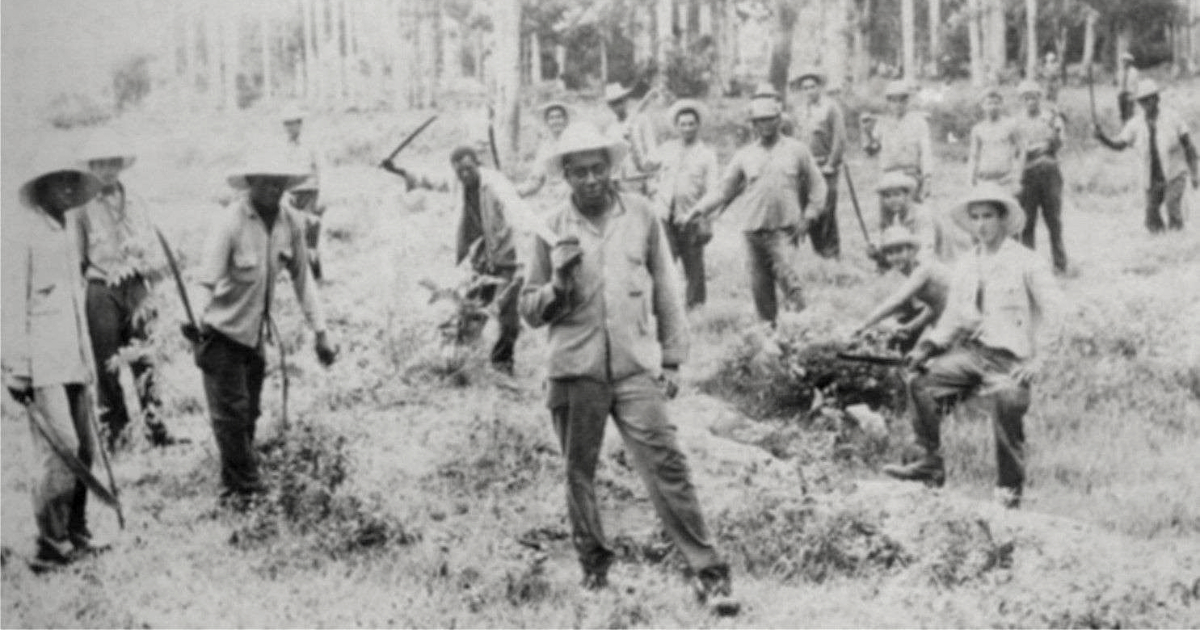More than 25,000 Cubans were interned in the Military Units to Aid Production (UMAP), genuine concentration camps where the Cuban regime confined, punished, and condemned to forced labor homosexuals, Catholics, and young people suspected of not sympathizing with the so-called "revolution" due to their cultural or intellectual references.
Between 1965 and 1968, the Cuban regime carried out this policy that violated human rights, leading many young people to suicide and subjecting thousands to hormone therapy, electroshock treatments, and behavioral experiments. Other testimonies reported torture with electrodes or treatments involving insulin-induced comas to modify "homosexual behaviors."
Sixty years after that atrocity committed against tens of thousands of people, the history of the UMAP remains hidden or minimized by a regime that attempts to clean its image by recognizing rights for the LGBTQ+ community, without delving into its criminal past of persecution, exclusion, and violence against homosexuals.
The heirs of Cuba’s totalitarian, macho, and communist power took advantage of the "mea culpa" uttered by Fidel Castro during a 2010 interview with the Mexican newspaper La Jornada, where he took responsibility for the creation of the UMAP.
Civil Society's Efforts to Uncover the Truth
Since then, without opening the classified archives on the matter, they have tried to turn the page on those events, starting with Deputy Mariela Castro Espín, daughter of General Raúl Castro and director of the National Center for Sexual Education (CENESEX), who has been a key figure in the false historical review of that tragic episode.
However, Cuban civil society has been determined to shed light on what happened in the more than seventy UMAP camps, as well as in the offices of the officials executing that perverse "reeducation" plan.
To this end, Cuban activists shared a link to an open-access documentary repository where anonymous sources have made public a series of documents "written between 1966 and 1968, extracted from military units in the former province of Camagüey and kept safe until today."
This was indicated on social media this Monday by independent journalist José Raúl Gallego, who shared the link so that the documents "can be disseminated, read, and used by citizens, journalists, and researchers, with the aim of being analyzed and contextualized for a more accurate and situated understanding of the information they provide."
"These documents are part of our country's history, part of the nation's historical memory, and should be available to all Cubans and interested individuals," Gallego emphasized.
Key Documents Released
The creation of a "Model Center" to restructure the Ministry of Interior’s Homosexual Service, whose objectives were to "erase all effeminate or antisocial behavior"; a 1966 interview with an inmate; or the establishment of Pre-military Schools for homosexuals, where they would be classified by typologies (A, B, and C) according to their "homosexual manifestations" and discipline, are some of the documents made public by Cuban civil society.
A "psychological essay" on changes in motivations; a document on Catholic and Protestant religions and their relationship with state power starting in 1959; and another focused on the Cuban Council of Evangelical Churches and Jehovah's Witnesses, among others, form the documentary corpus recovered for the memory and history of the totalitarian communist regime in Cuba.
According to Gallego, "their content corroborates part of the narratives by the UMAP victims, as the horror and abuses went far beyond what appears in these texts, and confirms the homophobic, discriminatory, and violative nature constituted in official policy, from which the main figures of the Cuban regime and their spokespersons have tried to dissociate."
Understanding the UMAP Atrocities
To provide further clarity on the shocking events surrounding the UMAP, here are some frequently asked questions and their answers.
What were the UMAP camps?
The UMAP camps, or Military Units to Aid Production, were forced labor camps in Cuba where the regime interned homosexuals, Catholics, and other individuals considered undesirable or non-sympathetic to the revolution.
When did the UMAP camps operate?
The UMAP camps were operational between 1965 and 1968.
Who was responsible for the creation of the UMAP camps?
Fidel Castro acknowledged responsibility for the creation of the UMAP camps during a 2010 interview with the Mexican newspaper La Jornada.
What kind of abuses occurred in the UMAP camps?
Abuses in the UMAP camps included forced labor, torture with electrodes, hormone therapy, electroshock treatments, insulin-induced comas, and various behavioral experiments to modify "homosexual behaviors."
